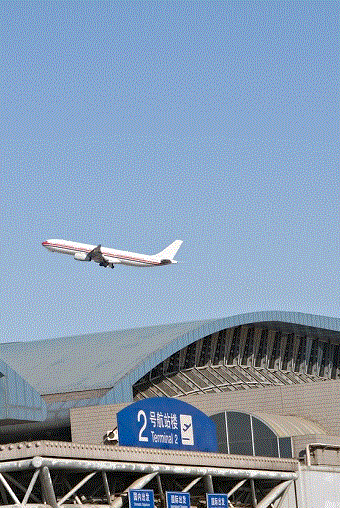Aerospace, Aircraft, Satellites & Drones (UAV) Industry Market Research
Competitive Intelligence, Business Analysis, Forecasts, Market Size, Trends, Companies, Statistics
Available Data Services: Custom Research Projects, Database Subsription or PDF eBooks
PLUNKETT PROVIDES IN-DEPTH STATISTICS TABLES COVERING THE FOLLOWING INDUSTRY TOPICS:
-
Aerospace, Satellites & Drones Industry Statistics and Market Size Overview
-
Quarterly Aerospace Manufacturing Industry Net Sales, U.S. :2001-2nd Quarter 2018
-
Quarterly Aerospace Manufacturing Industry Net Sales, U.S. :2001-2nd Quarter 2024
-
Gross Output in the Aircraft Manufacturing and Air Transportation Industries, U.S.: Selected Years, 2017-2023
-
Consolidation in U.S. Airlines
-
Federal R&D & R&D Plant Funding for Space Flight, Research & Supporting Activities, U.S.: Fiscal Years 2023-2025
-
Federal R&D & R&D Plant Funding for Air Transportation, U.S.: Fiscal Years 2022-2024
-
Top 10 U.S. Airlines & Airports Ranked by 2024 System Scheduled Enplanements
-
Federal R&D & R&D Plant Funding for National Defense, U.S.: Fiscal Years 2023-2025
-
Quarterly U.S. Scheduled Service Passenger Airlines Financial Reports: 3rd Quarter 2023-3rd Quarter 2024
-
NASA Budget Appropriations & Projections: 2023-2029
-
Air Carrier Traffic Statistics, U.S.: 2000 - 2024
-
U.S. Exports & Imports of Aircraft, Spacecraft, and Parts: 2018-3rd Quarter 2023
-
Federal R&D & R&D Plant Funding for Transportation, U.S.: Fiscal Years 2023-2025
-
Quarterly U.S. Scheduled Service Passenger Airlines Financial Reports: 3rd Quarter 2019-3rd Quarter 2020
-
U.S. Aviation Industry Average Annual Percentage Growth Forecasts by World Region: 2019-2039
-
NSF Budget by Appropriation (Dollars in Millions), Fiscal Years: 2023-2025
-
Total Scheduled U.S. International Passenger Traffic, U.S. Commercial Air Carriers: 2010-2040
-
Air Carrier Traffic Statistics, U.S.: 12 Months Ended May 2019 and June 2018
-
Satellite Telecommunications: Estimated Sources of Revenue & Expenses, U.S.: 2019-2022
-
U.S. Airline Revenue Passenger Enplanements: January 1996-May 2019
-
Annual U.S. Domestic Average Itinerary Air Fare: 1995-Q1 2019
-
U.S. Airline Passenger Activity: 2010-2044
-
Domestic Airline Fuel Cost, U.S.: January 1986-January 2019
-
Employment in the Aerospace Manufacturing Industry, U.S.: Monthly, January 1990-July 2018
-
Employment in the Aerospace Manufacturing Industry, U.S.: Monthly, January 1990-June 2020
-
Employment & Earnings in Aerospace Occupations, U.S.: May 2023
-
Consolidation in U.S. Airlines
Top Companies Profiled
The following is a partial listing for this industry. As a subscriber, you will have access to the leading companies and top growth companies. This includes publicly-held, private, subsidiary and joint venture companies, on a global basis as well as in the U.S.
Hundreds of Top Companies Profiled, Including:
PLUNKETT PROVIDES UNIQUE ANALYSIS OF THE FOLLOWING TRENDS THAT ARE DRIVING THIS INDUSTRY:
-
Introduction to the Aerospace, Aircraft, Satellites & Drones Industry
-
Boeing and Airbus Enjoy Boom in Orders/Major Aircraft Market in China
-
The Coronavirus’ Effect on the Aerospace, Aircraft, Satellites & Drones Industry
-
New Aircraft Designs Offer Greater Passenger Comfort/More Efficient Engines
-
Supersonic Jets Expected to Enter the Commercial Market
-
Supersonic Jets Expected to Enter the Commercial Market
-
Supersonic Jets Fly Again
-
Electric-Powered Airplanes are Under Research and Development
-
Flying Cars Get Off the Ground
-
Smaller Satellites (SmallSats and CubeSats) and Low Earth Orbit Revolutionize Telecommunications
-
Light-Weight Satellites, Solar-Powered Drones and Giant Helium Balloons Studied for Internet Access
-
Private, Reusable Rockets Launch Commercial Satellites, Lowering Costs
-
Giant Balloons Used for Communications and Research
-
Space Travel Firms Seek Tourists/New Vehicles for U.S. Astronauts
-
Private Space Vehicles Begin to Fly, Including the SpaceShipTwo, but 2014 Crash May Slow Development
-
Commercial Uses of Drones
-
Drone Regulation and Licensing Evolve
-
Drones Provide New Tools for Precision Agriculture
-
Drones Save Time and Money in Safety Inspections and Insurance Adjusting
-
Package Delivery by Drone
-
The Future of Aviation, Satellites and the Aerospace Industry
Key Findings:
A complete market research report, including forecasts and market estimates, technologies analysis and developments at innovative firms within the Aerospace, Aircraft, Satellites & Drones Industry.Gain vital insights that can help shape strategy for business development, product development and investments.
Key Features:
- Business trends analysis
- In-depth industry overview
- Technology trends analysis
- Forecasts
- Spending, investment, and consumption discussions
- In-depth industry statistics and metrics
-
Industry employment numbers
Additional Key Features Include:
Industry Glossary
Industry Contacts list, including Professional Societies and Industry Associations
Profiles of industry-leading companies
- U.S. and Global Firms
- Publicly held, Private and Subsidiaries
- Executive Contacts
- Revenues
-
For Public Companies: Detailed Financial Summaries
-
Statistical Tables
Key Questions Answered Include:
- How is the industry evolving?
- How is the industry being shaped by new technologies?
- How is demand growing in emerging markets and mature economies?
- What is the size of the market now and in the future?
- What are the financial results of the leading companies?
- What are the names and titles of top executives?
-
What are the top companies and what are their revenues?
This feature-rich report covers competitive intelligence, market research and business analysis—everything you need to know about the Aerospace, Aircraft, Satellites & Drones Industry.
Plunkett Research Provides Unique Analysis of the Following Major Trends Affecting the Aerospace, Aircraft, Satellites & Drones Industry
-
Major Trends Affecting the Aerospace, Aircraft, Satellites & Drones Industry
-
Introduction to the Aerospace, Aircraft, Satellites & Drones Industry
-
Boeing and Airbus Compete for New Orders
-
New Aircraft Designs Offer Greater Passenger Comfort/More Efficient Engines
-
Supersonic Jets Fly Again
-
Hydrogen and Electric-Powered Airplanes Are Under Research and Development
-
Flying Taxis and Commuter Aircraft Get Off the Ground
-
Smaller Satellites (SmallSats and CubeSats) and Low Earth Orbit Revolutionize Telecommunications
-
Private, Reusable Rockets Launch Commercial Satellites and Serve both the U.S. Military & NASA
-
Space Travel Firms Carry Tourists/New Vehicles for U.S. Astronauts
-
Commercial Uses of Drones Advance/Autonomous Mid-Size Aircraft Developed
-
Drone Regulation and Licensing Evolve
-
Drones Provide New Tools for Precision Agriculture
-
Drones Save Time and Money in a Variety of Industries Including Insurance, Real Estate and Construction
-
Package and Food Delivery by Drone
-
The Future of Space Commercialization and Private Rocket Launch Services
Plunkett Research Provides In-Depth Tables for the Following Aerospace, Aircraft, Satellites & Drones Industry Statistics
-
Aerospace, Aircraft, Satellites & Drones Industry Statistics and Market Size Overview
-
Quarterly Aerospace Manufacturing Industry Net Sales, U.S.: 2001-1st Quarter 2025
-
Gross Output in the Aircraft Manufacturing and Air Transportation Industries, U.S.: Selected Years, 2017-2023
-
Satellite Telecommunications: Estimated Sources of Revenue & Expenses, U.S.: 2019-2022
-
Federal R&D & R&D Plant Funding for Space Flight, Research & Supporting Activities, U.S.: Fiscal Years 2023-2025
-
Federal R&D & R&D Plant Funding for Air Transportation, U.S.: Fiscal Years 2023-2025
-
Federal R&D & R&D Plant Funding for National Defense, U.S.: Fiscal Years 2023-2025
-
NASA Budget Appropriations & Projections: 2023-2029
-
U.S. Exports & Imports of Aircraft, Spacecraft, and Parts: 2018-2024
-
Consolidation in U.S. Airlines
-
Quarterly U.S. Scheduled Service Passenger Airlines Financial Reports:
-
1st Quarter 2024-1st Quarter 2025
-
Air Carrier Traffic Statistics, U.S.: 2000 - April 2025
-
U.S. Airline Passenger Activity: 2010-2045
-
Top 10 U.S. Airlines & Airports Ranked by 2025 System Scheduled Enplanements
-
Employment & Earnings in Aerospace Occupations, U.S.: May 2024
-
Federal R&D & R&D Plant Funding for Transportation, U.S.: Fiscal Years 2023-2025
-
NSF Budget by Appropriation (Dollars in Millions), Fiscal Years: 2023-2025


















